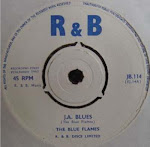Young Londoners fall into two main groups which are divided by the usual distinctions of age, occupation and money.
First there are the teenagers, referred to generically as ‘mods’. Clearly some are modder than others, but if you watch the crowd scenes in the various television programmes devoted to pop, you will get the general idea of the current fashions in this group. (Boys on these programmes whose fancy dress appears to be fancier than most, and girls of immodest appearance, are probably not mods at all but specially hired to give colour to the proceedings.) Mods like to look as much like one another as possible, and their girls are rather demure. Elder mods are sometimes as old as twenty-two. No one knows what happens to old mods because we haven’t had a whole generation of them yet. Presumably they marry, have children, and settle down to form the backbone of
Mods continue to earn more than their parents ever did when young, and they spend their money almost exclusively on pop records and clothes. The correct attitude in this group is exceedingly cool, almost blank. The young girls may scream occasionally at the pop group of their choice, and the boys may have the odd Saturday night or Bank Holiday punch-up, but emotional behaviour or any kind of frolicking is otherwise unseemly. They are not strictly chaste – but the girls are preparing for a white wedding. Mods don’t go to bistros, they prefer the Gold Egg type of restaurant. Wherever you see gigantic orange light fittings and décor which looks like one huge fruit machine, you will know that the mods are inside eating square meals in round buns. Mods’ night-life ends around midnight during the week. They have nine-to-five jobs and live at home, so they don’t go to the expensive late-night discothèques.
The mods are responsible, as principal consumers, for the progress of pop music, and the tabernacle and heart of
… The Marquee moved about three years ago from its old premises in
In
The Stones, in the days when they really were dirty, had their first central

His music was much harsher and harder than anything around now, and the Marquee then was not exactly fashionable. There were always a lot of old, ugly and unexplained people around.
Some nights the rucksack-beard-and-bedding-roll group would arrive from hitchin in some unknown Thumb Country, and there was usually a sort of habitué circle of Negroes with hip flasks dancing in front of the bandstand.
The Negroes have moved on now to the Flamingo and All-Nighter Club in Lower Wardour Street, home of Georgie Fame & The Blue Flames, and Zoot Money and The Big Roll Band.
The hitch-hikers have disappeared altogether from the beat-club scene. They were the extremist end of the Rocker tribe, which is now almost extinct. But you can still see nomads in
They are filthy and hairy and lost, and they sit there nursing their blistered feet after a trek from god knows where. Most of them grow out of it and get over it, but they suffer for their art and make a change sometimes from the neat little mass-produced mods.
These mods, the ones who care more about The Look than The Sound, congregate nightly at a place called Tiles just a block down
The music of Steve Darbishire and The Yum Yum Band, or of Everett of England, or the Anteeks, is relayed out into the street via speakers placed in neighbouring shop doorways.
Inside they dance actively, and spend their money in the night-time shops built in the maze of corridors that surround the main dance floor. The birds’ clothes shop is called Plumage, and if you’re not a success on arrival you can nip in there and come out again in something new.
On nights when there’s no live music they still crowd near the bandstand and listen to the patter of the tiny DJ. But they dance less and inspect one another’s clothing more.
The girls gather in serious little groups and tell one another the price of things, and the boys go peacocking around catching their own reflections in the glass swing doors.
Wall-to-wall mirrors in this welter of narcissism would send the sales of plumage for both sexes up by 50 per cent – or bring the whole enterprise to a halt.

... to be continued





1 comment:
I hated Tiles and the weekenders who went there.
A place where people sold aspirins dyed blue for a shilling each to unsuspecting upper class twits.
Post a Comment